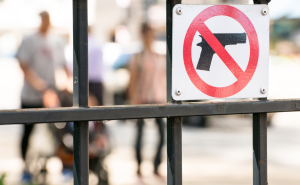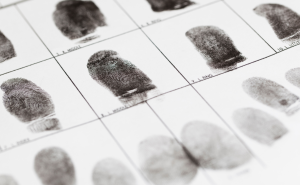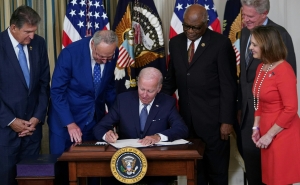New Report Offers Policy Recommendations to Address Alcohol Use as Risk Factor for Gun Violence
Recommendations call upon states to enact laws that limit access to firearms by people with history of alcohol misuse and at locations where alcohol is consumed

Researchers from the Center for Gun Violence Solutions at the Johns Hopkins Bloomberg School of Public Health released a set of state-based policy recommendations to address the intersection of alcohol use and firearms.
Alcohol plays an outsize role in firearm fatalities. An estimated one in three individuals who committed homicide with a firearm had been heavily drinking when they murdered their victims. More than 30 percent of gun homicide victims had been heavily drinking when they were killed, and a quarter of gun suicide victims had been heavily drinking before dying by suicide.
The report’s recommendations were developed with a steering committee of the Consortium for Risk-Based Firearm Policy, a group of leading experts that advances evidence-based gun violence prevention policies. The Consortium is led by Joshua Horwitz, JD, the Dana Feitler Professor of the Practice in Gun Violence Prevention and Advocacy and co-director of the Center for Gun Violence Solutions at the Bloomberg School.
The report, “Alcohol Misuse and Gun Violence: An Evidence-based Approach for State Policy,” focuses on two policy areas: limiting access to firearms by a person with a documented history of alcohol misuse, such as driving under the influence, and restricting firearms at locations where alcohol is consumed. The authors based their recommendations on the latest available research on alcohol use and firearms as well as comprehensive reviews of state laws.
“The intersection of alcohol misuse and firearms can have devastating consequences,” says Silvia Villarreal, director of research translation at the Center for Gun Violence Solutions the report’s lead author. “These recommendations provide specific guidelines for states to limit access to firearms and address the risk of dangerous behaviors when the two are combined.”
Federal law does not address the risk of alcohol and guns, and many state laws are ambiguous. Some states prohibit possession of guns using unclear criteria such as “habitual drunkard,” or “while intoxicated.” Bringing a gun to a place where alcohol is present is legal in many states but prohibited in others. Some states exempt concealed carry permit holders from laws prohibiting firearm possession in places where alcohol is consumed.
To limit access to firearms by an individual with a history of alcohol misuse, the authors recommend that states focus on individuals with a history of driving under the influence or other documented alcohol misuse. The authors recommend that states pass laws that prohibit the following for at least five years:
- The purchase and possession of firearms by an individual convicted of two or more instances within a five-year period of driving under the influence of alcohol or driving while intoxicated.
- Obtaining or possessing a concealed carry permit—a license required to carry firearms in public—by individuals convicted of one driving under the influence offense, and/or documented with court records to have a recent history of alcohol misuse.
To limit access to guns when and where alcohol is consumed, the authors recommend that states pass laws prohibiting public carrying or possession of firearms where alcohol is consumed, including bars, restaurants, sporting arenas, and outdoor festivals and other events. Some states already have laws that restrict firearm possession in places such as bars and restaurants; however, concealed carry permit holders are often exempt from these laws.
The report also includes additional policy considerations, including:
- Limiting the number of alcohol retailers in a particular area through licensing and zoning regulations.
- Limiting the hours and days when alcohol can be served.
- Increasing the price of alcohol by raising taxes.
“Firearm policies aimed at reducing harmful outcomes due to gun violence do not operate in a vacuum,” says Horwitz. “We must take into consideration the environment where alcohol is sold and consumed to limit the risk of potential violence.”
The report is aimed at researchers, practitioners, policymakers, law enforcement professionals, and others working to address gun violence.
“Alcohol Misuse and Gun Violence: An Evidence-based Approach for State Policy” was written by Silvia Villarreal, Amy Barnhorst, Richard Bonnie, Kami Chavis, Ari Davis, Shannon Frattaroli, Kelly Roskam, Jeffrey Swanson, and Joshua Horwitz.
The report was supported by the Joyce Foundation.
# # #
Media contacts: Barbara Benham bbenham1@jhu.edu and Kristine Henry khenry39@jhu.edu





